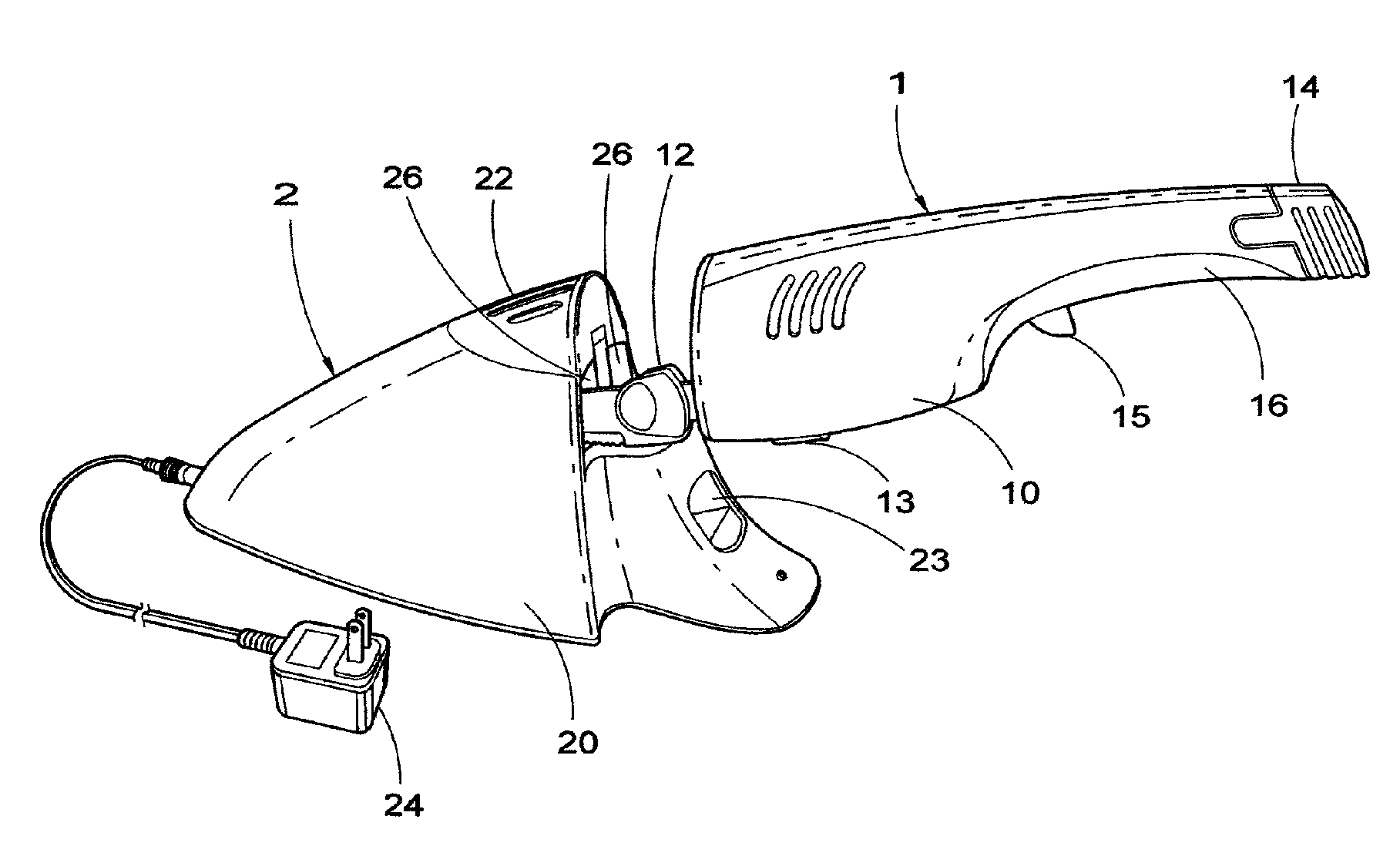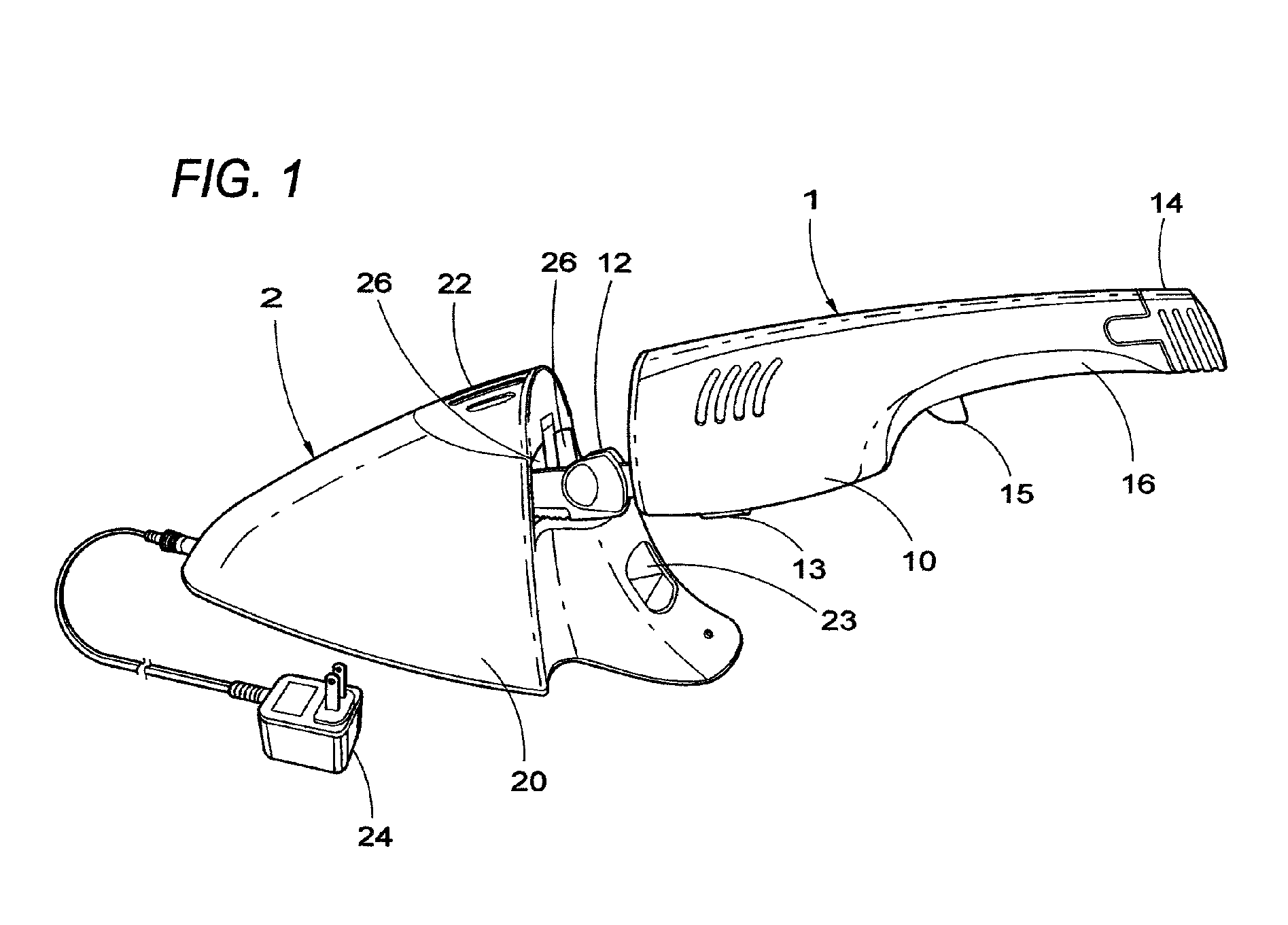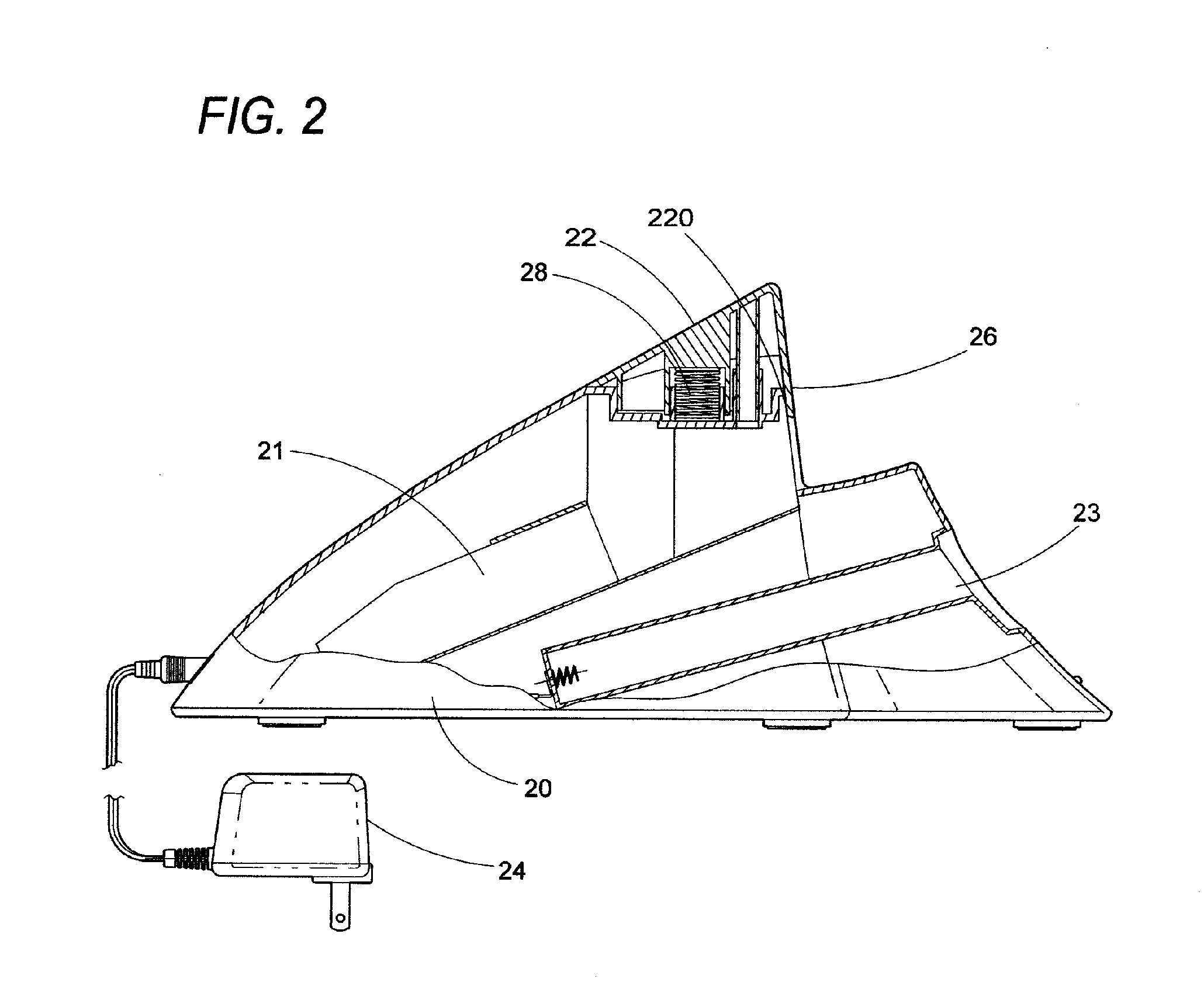Safety stand and knife and method of use
a safety stand and knife technology, applied in the field of safety stand and knife and method of use, can solve the problems of user's care level being lowered, electric knife blades typically cannot be stored in conventional knife blocks for single bladed knives, and electric knives may not know the correct pressur
- Summary
- Abstract
- Description
- Claims
- Application Information
AI Technical Summary
Benefits of technology
Problems solved by technology
Method used
Image
Examples
second embodiment
[0033]In the invention, not shown in the drawings, the connector 28 is resilient. The term “connector” does not require that a resilient connector 28 be permanently connected to either the safety stand 2 or the blade lock 22. Together, blade lock 22 and safety stand 2 define at least one blade opening 26 configured to permit at least one blade 12 to pass there through without displacement of the blade lock 22.
[0034]When the lock 22 is pressed down flush with the stand base 20, the rear edge 130 of the lock sentry 128 is configured to abut an inner wall 220 of the blade lock 22, and to prevent removal of blades 12 from the blade opening 26 as long as downward pressure on the lock 22 is maintained. When so positioned and a blade removing force is exerted on the blades 12, the lock 22 retains the blades 12 as long as the lock 22 remains pressed and in the abutment position described above. The height h, the applied downward force, and the configuration of the rear edge of the lock sent...
first embodiment
[0037]With reference now to FIG. 7, to remove blades 12 retained in the safety stand 2 of the first embodiment, one of two methods may be used. The blade lock 22 may be pulled upwards with one hand while the blades 12 are removed using the other hand. Alternately, a user firmly stabilizes the stand 2 with one hand while exerting a removing force on the blades 12 with the other hand.
[0038]The stands in either embodiment are further configured to balance and hold an assembled knife 1 by its blades 12 within the safety stand 2, to hold blades 12 alone within the stand 2, or to hold a combination of blades 12 and an assembled knife 1. There is no apparent limit to the number of blade openings 26 that a stand 2 may have.
PUM
 Login to View More
Login to View More Abstract
Description
Claims
Application Information
 Login to View More
Login to View More - R&D
- Intellectual Property
- Life Sciences
- Materials
- Tech Scout
- Unparalleled Data Quality
- Higher Quality Content
- 60% Fewer Hallucinations
Browse by: Latest US Patents, China's latest patents, Technical Efficacy Thesaurus, Application Domain, Technology Topic, Popular Technical Reports.
© 2025 PatSnap. All rights reserved.Legal|Privacy policy|Modern Slavery Act Transparency Statement|Sitemap|About US| Contact US: help@patsnap.com



